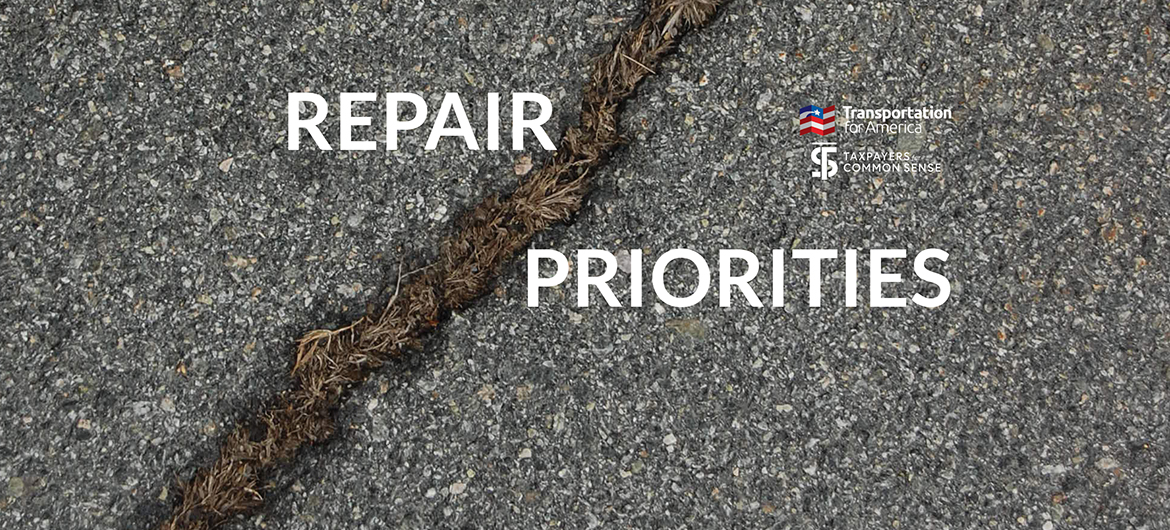
News
By Smart Growth America, May 14, 2019
 It’s Infrastructure Week again and politicians are back at it, bemoaning our “crumbling roads and bridges” and insisting we must spend more to fix the problem. But we’ve got some cold water to throw on this pity party: Despite more transportation spending over the last decade, the percentage of the roads nationwide in “poor condition” increased from 14 to 20 percent.
It’s Infrastructure Week again and politicians are back at it, bemoaning our “crumbling roads and bridges” and insisting we must spend more to fix the problem. But we’ve got some cold water to throw on this pity party: Despite more transportation spending over the last decade, the percentage of the roads nationwide in “poor condition” increased from 14 to 20 percent.
That’s the headline from our new report—Repair Priorities 2019—which finds that states are neglecting repair and routine maintenance in favor of costly road expansions and widenings. Even when given more flexibility by Congress to spend money as they see fit, states, on average, spent as much money expanding their road networks ($21.3 billion) as they did repairing their existing roads ($21.4 billion) each year.
In short, our infrastructure issues are more of a policy problem than a money problem.
As T4America Director Beth Osborne said in our release today, “While a handful of states are doing an admirable job putting their money where their mouth is by devoting the bulk of their federal dollars to repair, many other states are spending vastly more on expanding their roads or building new ones—creating new liabilities in the process—even as their existing system falls into disrepair.”
Download Repair Priorities for a state-by-state look at how states are spending their money and what it will take to fix the system.
Download Repair Priorities 2019
Putting the (money) cart before the horse
Two trillion is the hottest number in Washington, DC right now—it’s how much money politicians want to pump into a yet-to-be-fleshed-out infrastructure plan. Although they haven’t yet articulated what all that extra spending will actually achieve or how this money will be spent more responsibly than the hundreds of billions we spent over the last decade, they already know the price tag.
The scope of our vision and ambition should determine how much money we need to spend on infrastructure. And that vision should then be supported with thoughtful policy—not a blank check—that will make sure we achieve our goals.
Getting back on track
So what might thoughtful policy look like? For starters, we should give taxpayers an idea of what they’re paying for with clear, measurable outcomes—do we want to cut the number of roads in poor condition in half over the next six years? Reduce traffic fatalities by 60 percent? Decrease emissions by 70 percent? Define the vision and set some measurable goals first.
We could require states to use available federal funding—billions of dollars they’re given automatically every year—to fix the system before expanding it. We could establish a competitive funding program for new road capacity that requires a higher standard for asset management—just like we do for transit. We could require more frequent and diligent reporting so that taxpayers can hold their officials accountable.
What do all these ideas have in common? They’re about policy, not money. Whether it’s a stand-alone infrastructure bill or our existing federal transportation program, policy is the key to fixing America’s infrastructure problem.
Related News

© 2025 Smart Growth America. All rights reserved
Site By3Lane Marketing








